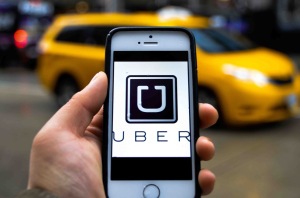I was expounding the theory of production and cost to my student yesterday morning, and truth to be said, this topic, though important and highly relevant to what we see around us, never really appealed to me.
And I could see it in my student’s eyes as she struggled in feigning interest in the subject, especially when we got to the concepts of the firms’ short-run shut-down conditions.
But what better way was there to make lessons more interesting, than the use of actual case studies around us?
And that was how we ended up chatting a little about Uber.
Uber has lost the most money for a private company in tech history
Probably old news to most of us, but perhaps new for students engrossed in studying for their exams.
So just how much did Uber lose?
Well, a rather eye-watering US$2.8B in 2016 – nearly S$4B. To put in context, its S$4,000,000,000. 9 zeros!
To put in context, Uber’s loss actually exceeds the nominal GDP of roughly 30 countries!
In theory, firms should shut down when their total revenue cannot cover total cost
Students are probably familiar with the graphical representation of the shut-down conditions of a firm. Namely, in the case of:
- MR5 –> A happy firm that is earning supernormal profit
- MR4 –> A firm that is just getting by (normal profit)
- MR3 –> A firm that is losing money in the long-term (because it fails to cover variable and fixed costs combined), but should carry on in the short-run to minimise loss.
- MR2 –> A firm that just breaks even on variable cost and should carry on in the short-run to minimise loss.
- MR1 –> The firm should shut down immediately!
Uber is a private company and is not obliged to release information about its financial health. But based on what we know, MR1 seems to best describe Uber’s situation.
So why isn’t Uber shutting down yet?
The biggest elephant in the room here that answers this is Expectations.
The markets expect that Uber will become highly profitable in the long run.
And the evidence isn’t just anecdotal – Uber is actually the highest valued tech start-up the world has seen. In 2015, it was estimated to be worth US$68B.
If Amazon can be used as a precedent for eventual profit-making, then it is safe to say that investors are actually willing to wait 20 years and possibly beyond.
Such is the power of hope and dreams – despite staggering losses, Uber has a ridiculously high valuation and that fact won’t go away anytime soon.
So does it mean that the shut-down condition theory is wrong?
The shut-down condition taught at “A” level to JC students is highly simplistic.
For starters, it assumes that firms can frictionlessly start or end their operations.
Obviously this is not true, especially for big firms:
- Firms don’t usually just close down immediately. Unless there are strongly compelling reasons to or they intend to “burn bridges” with their stakeholders, there typically will be a transitionary period during which firms just about get by.
- Firms are aware that starting a business again is not like starting a car. This is a major reason why firms may hang on even if their total costs cannot be covered by their total revenue. Because starting a business again may actually incur a greater cost than the cost savings in shutting down operations.
- Some firms are “too big to fail”. Many times in history, big firms have gone under, only to be bailed out by their respective governments. Government intervention in this case prevents firms from shutting down per the economic theory, because it is judged to have high potential social impacts.
The next key reason why the shut-down condition theory may not correctly predict the firm’s actual shut-down triggers, is one that students are familiar with – that firms are assumed to be profit-maximising (or loss-minimising in this case).
Of course most students are familiar that firms do not always aim for maximising profits. They could be revenue maximising, or even socially responsible.
Or they could even be just be plain irrational. Though to give the benefit of doubt to the firms’ management, this may occur because of imperfect information about the state of the firm.
Not to mention firms are really a collection of people…
Finally, students usually miss this fundamental point. A firm is comprised of individual humans beings working together to produce goods and services.
Is it really safe to always assume that the goals of the firm will always be aligned with that of its individual constituents? Think of your noisy classmates – do they always keep quiet during lessons even when told to do so?
Again this is not merely anecdotal – history is replete with cases where firms under heavy losses are kept alive by key stakeholders who had personal gains in mind. Perhaps the most famous example was the Enron Scandal.
So in conclusion, firms like Uber are not quite unusual. In fact, it suggests that the shut-down condition taught to JC students is highly simplistic and I have explained several reasons for this.
If you had found this blog post informative, please do share it on social media! I will be happy to entertain comments and questions below as well. Till the next one!



